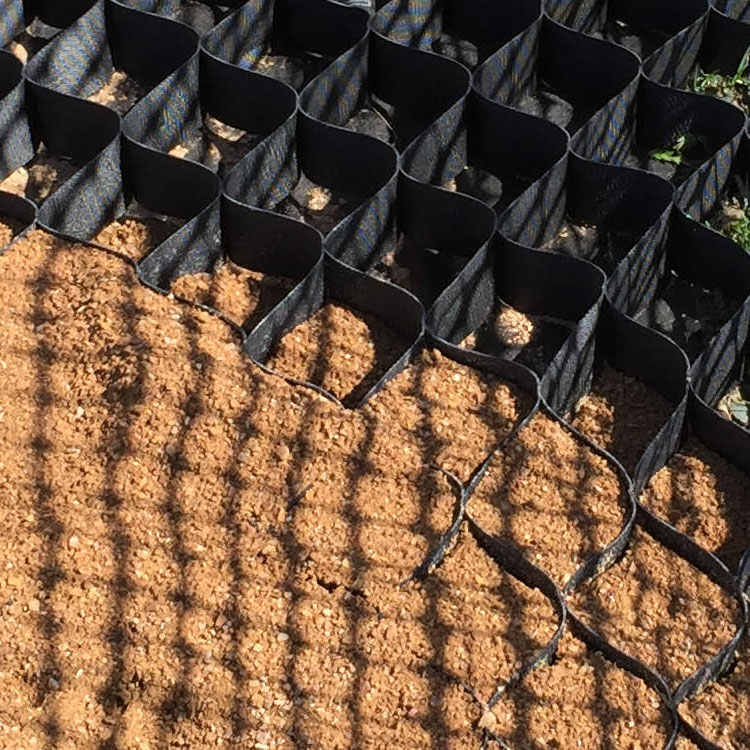With the return of spring comes the return of mud season.
Or for some of us with mild winters, mud season has already been going on for months. A dry lot paddock with solid footing is an absolute must-have on every horse property. This area allows your horses to still get turnout time while saving your pastures from damage during wet weather. The solid footing keeps your horses out of the mud so they stay healthier and cleaner. Here are some tips for the footing in your dry lot paddock.
Location
If you don’t already have a dry lot paddock and would like to install one, or if you would like to change your existing dry lot paddock, choosing the right location is your first consideration. The best dry lot paddock location is a combination of a few features. It should be on high ground if possible to aid in drainage, it should be easily accessible from the barn and pastures, and it should help create a better traffic flow on your farm.
The quickest way to set up a dry lot paddock is to add two lines of fencing to the corner of your pasture near the gate to section off this area. This saves money by utilizing two sides of the existing fence line and works into the current traffic flow on the farm. By incorporating your dry lot paddock into the pasture, you create a multipurpose space that can function as a catch pen if you need to separate out a horse from the herd. This also creates a sort of airlock situation that reduces the risk of other horses slipping out the gate while you are leading another horse through the gate. I am all for increasing safety and efficiency whenever possible!
Base Layer
A solid base layer is the next most important step in creating a dry lot paddock that will withstand the wear from horses and weather. If your paddock area is already very deep mud, it would be most helpful to scrape away as much of the loose mud layer as possible. Or, if the area does dry out, maybe wait until a drier season to install your paddock footing. I suggest using a layer of large gravel stones for your base layer to create proper drainage, then cover this base with a layer of finer gravel. You can add additional footing material on top of this layer if desired.
Mud Management Panels
Mud Management by RAMM [as seen on The Martha Stewart Blog] are flexible HDPE panels that hold your footing material in place within their 3 inch deep cells. These panels require very little preparation before installation and can be used nearly anywhere because they mold to the shape of the terrain where they are placed. Simply cover the area with landscape fabric (to separate the footing material from the dirt below), stretch out the panels, and fill with angular crushed stone. These panels are especially useful in high-traffic areas where other footing may get displaced from heavy hoof traffic. For more information about Mud Management panels, visit the RAMM website.
Pea Gravel
Barefoot horses in particular will benefit greatly from the addition of pea gravel areas in a dry lot paddock. The small round stones massage the hoof for increased blood flow and aid in creating a rounded hoof wall edge which can help prevent hoof cracks and chips. Use pea gravel in areas where your horses frequently travel to and through, like around water sources. Pea gravel has the most benefit when fairly deep, so make this layer at least 3 to 4 inches deep so hooves can really sink into the layer.
Sand
The goal of a dry lot paddock is creating an area with solid stable footing, but if your horses are spending a lot of time in this space, they would also appreciate somewhere soft to lay down and roll. Add a sand-filled area that is plenty big enough for your horses to lay down and also roll completely over. Add your sand right on top of your dry lot base footing for best results. You can outline this area with landscape timbers or railroad ties to contain the sand from the rest of the dry lot footing. You may also choose to add some sand over the base layer inside paddock shelters. This again creates softer footing for your horses and also is very easy to pick out to keep the area clean.
Do You Have a Dry Lot Paddock?
Installing our dry lot paddock a few years ago was the most impactful change to our horse-keeping routines over the past 15 years! No more standing in mud, no more wasted hay stomped into the mud, no more sloshing boots through muddy gateways. Our horses are happier and their hooves healthier. We are able to better maintain our pastures by having a place to keep the horses off of them during wet weather. If you have been considering adding a dry lot paddock, even a small one, make this the year it gets done. If you have any questions about fencing your dry lot paddock, contact the specialists at RAMM.
Love this blog post? We think you will like: Arena Footing 101




